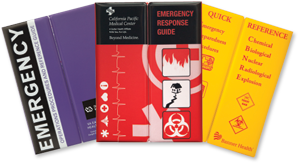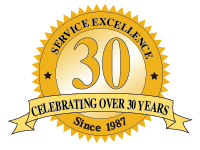Written by: Jon Harris, The Buffalo News, N.Y., December 22, 2023
(TNS) – The ferocity and duration of last year’s historic blizzard presented monumental challenges to Western New York’s hospitals.
Many hospital staff members were stuck at work for days once mandates came down for them to remain on-site. They slept when and where they could.
Bringing in staff reinforcements was nearly impossible; the agencies with vehicles capable of traversing the weather conditions were busy trying to save lives during the storm. Some residents, freezing and in search of shelter, descended upon hospitals for survival.
By the end of the blizzard, many hospitals were scraping by on food, with some reliant on community donations from grocers and restaurants. Clean linens were hard to come by.
“It was difficult, to say the least,” said Emilee Matthews, an emergency room nurse at Erie County Medical Center who was there for roughly 96 hours during the blizzard. Her first night at work during the storm, she slept on a table.
Hospital and union leaders acknowledge some procedures worked and some didn’t during last year’s blizzard. A post-blizzard report from the Erie County Department of Health noted hospitals and health care centers “should review and revise their emergency plans and how they interact with staffing, supplies and shelter for patients, staff and families.”
The region’s hospitals said they have done that and are better prepared to weather the next generational storm or major emergency that hits Western New York.
For instance, Kaleida Health stocked up food, linens and sleeping equipment. Both Kaleida and Catholic Health System formed employee response teams, with Catholic Health reaching out to hospitals in Florida to gather intel about how they prepare for impending hurricanes.
ECMC, meanwhile, bolstered its food distribution processes so it’s better prepared should another blizzard arrive that forces area residents to seek shelter at the hospital.
Jim Scordato, vice president of the Western New York hospital division for 1199SEIU United Healthcare Workers East, said the union this fall worked on agreements with Kaleida and Catholic Health. Both agreements, he said, have a lot of similarities, including employee response teams that get activated when a storm or emergency occurs. In addition, Scordato said the agreements allow for tweaks to be made as needed in the future.
“Both employers were ready, willing and able to sit with us and work something out to where we don’t get into the problems and issues that happened in the big storm last year,” he said.
While policies were in need of improvement, the hospitals lauded employees for their efforts last year when heartwarming stories emerged amid a tragic and deadly storm.
Kaleida called attention to how employees at Millard Fillmore Suburban Hospital were able to access the gift shop on Christmas morning to ensure patients would have a present. And after a patient — with a dying battery for a left ventricular assist device — got stuck on the way to Buffalo General Medical Center, staff was able to locate a new battery and get it to the patient.
Amid the chaos, Matthews at ECMC said employees came together to provide the best care they could, under the circumstances, to patients, family members and those who had sought shelter in the hospital.
“We really did do the best that we could,” she said.
Kaleida Health stocks up
Natural light struggles to peek through this seventh-floor storage room at Buffalo General Medical Center, its windows partially blocked by boxes stacked upon pallets — some loaded four or five tiers high.
Inside the boxes are items such as foldable cots, single-use sheet sets, air mattresses, hygiene kits and scrubs.
All the supplies are ready to be quickly deployed if and when the next storm hits.
“Will we have another generational blizzard? Who knows,” Kaleida Chief Administrative Officer Michael Hughes said. “But we always want to be prepared.”
In the weeks following the blizzard last year, Hughes said Kaleida’s leadership team fanned out across the system’s sites, listening to staff feedback on what went well and what needed improvement. Following those discussions, and talks with the unions that represent its workers, Kaleida made a number of changes.
Ryan Hejmanowski, Kaleida’s corporate emergency manager, said that included purchasing an additional 48 hours worth of linen across the system at all sites.
“That was something that we did have a challenge with during the storm,” he said. “It wasn’t something that came to a critical point, but it was challenging.”
In addition, Hejmanowski said Kaleida has identified additional sleeping locations throughout the system and “increased significantly” its inventory of sleep equipment.
Further, Kaleida developed a plan with its food vendor to deploy additional food stocks — “at least 96 hours worth,” he said — before an anticipated storm.
Kaleida also built “staffing resiliency plans,” Hejmanowski said. That included creating management teams that will report to each of the health system’s sites as needed during a weather emergency.
Further, Kaleida worked with labor unions to develop employee teams who have chosen to be on a “response team that would deploy early to sites on a green-grass, blue-sky day,” said Timothy Kornacki, the health system’s director of regulatory affairs and emergency management oversight.
“What we weren’t prepared for was the sheer inability to move any staff in or out, to bring in fresh resources,” Kornacki said of last year’s blizzard.
That’s why so many of Kaleida’s updated processes are now focused on getting staff in place as early as possible.
“We realized, and this storm was really the catalyst for that, that there has to be a better way and that’s trying to get people and assets in early,” Kornacki said.
Catholic Health builds response team
Catholic Health did a post-blizzard review that included soliciting feedback from employees.
“We needed to hear from the people who experienced the event in different ways than what our leadership did,” said Laura Dewey, the health system’s director of emergency management and safety.
Catholic Health received hundreds of comments. Some “were brutal, to be honest,” but Dewey said she read every one.
Several employees mentioned being part of hurricane teams at prior roles in the south. So Catholic Health did research and made connections with three facilities in Florida.
While there are nuances between a blizzard and hurricane response, Dewey said the system started planning how it could apply a similar concept in Western New York.
That led to the Catholic Health Emergency Response Team, which Dewey said took months of planning — in conjunction with labor unions — before it launched this fall. It’s a multidisciplinary, systemwide team that can deploy to any emergency event, whether that’s a blizzard or a mass casualty incident.
As of late November, Dewey said more than 300 employees had enrolled in the team with “more people joining every day.”
When they enroll, Dewey said employees have the option to share any special skills they have. Dewey said she recalled a surgical tech saying they had plumbing skills, a cook saying they knew how to drive a plow and a nurse who simply said they could outwork anyone.
“These are your everyday people who are running these hospitals or long-term care facilities, and they’re volunteering to step up and say that they’re willing to deploy ahead of an event like a snowstorm,” Dewey said.
Dewey said she feels like the team gives Catholic Health the “best chance for success” whenever the next emergency occurs. From there, it will be about continuing to make improvements.
“We’re not naïve to the fact that we’re going to have some bumps, and we’re going to kind of learn and grow from that,” she said.
ECMC improves food distribution
Another challenge for Western New York hospitals was the number of residents who, with no power at home and nowhere else to go, sought shelter and warmth from the blizzard.
By Christmas Day last year, ECMC had about 150 civilians inside its hospital.
“They saw the lights on at ECMC, and they knew that when they got to our door, we always welcome in,” said Charlene Ludlow, senior vice president of nursing at ECMC. “And we were really trying to accommodate all of them. But again, we were not prepared for that many people coming in from the community.”
While Ludlow said improvements have been made in the availability and resources of community centers, ECMC also is preparing in case it could again get an influx of citizens during a similar future storm.
For instance, she said ECMC has always had at least a three-day supply of food on hand.
“But we really didn’t have great distribution systems, because what we anticipated was just feeding the patients,” Ludlow said. “But now we have processes for how we’re going to feed the staff, how we’re going to feed the patients, as well as how to feed the people that came in from the community.”
In addition, Ludlow said ECMC has increased its on-site stock of linens, IV fluids and pharmacy supplies.
ECMC also sent a winter-preparedness newsletter to its nearly 4,000 employees in October.
That document encouraged employees to keep a personal go-bag that includes at least one complete change of clothes; at least three days’ worth of personal medications; personal care products such as a toothbrush, toothpaste, soap and deodorant; and a sleeping bag or air mattress.
“I would say we do feel more prepared,” she said. “There’s more things that we’ve put in place. I mean, obviously, you’ve got to learn from these storms every time. You always pull something out of them that you can do better.”
©2023 The Buffalo News (Buffalo, N.Y.) Distributed by Tribune Content Agency, LLC.
This article appeared on Emergency Management News and is shared with consent: https://www.govtech.com/em/what-changed-at-new-york-hospitals-after-blizzard







